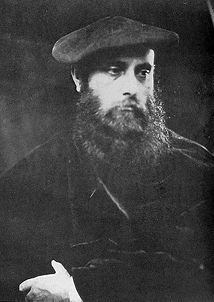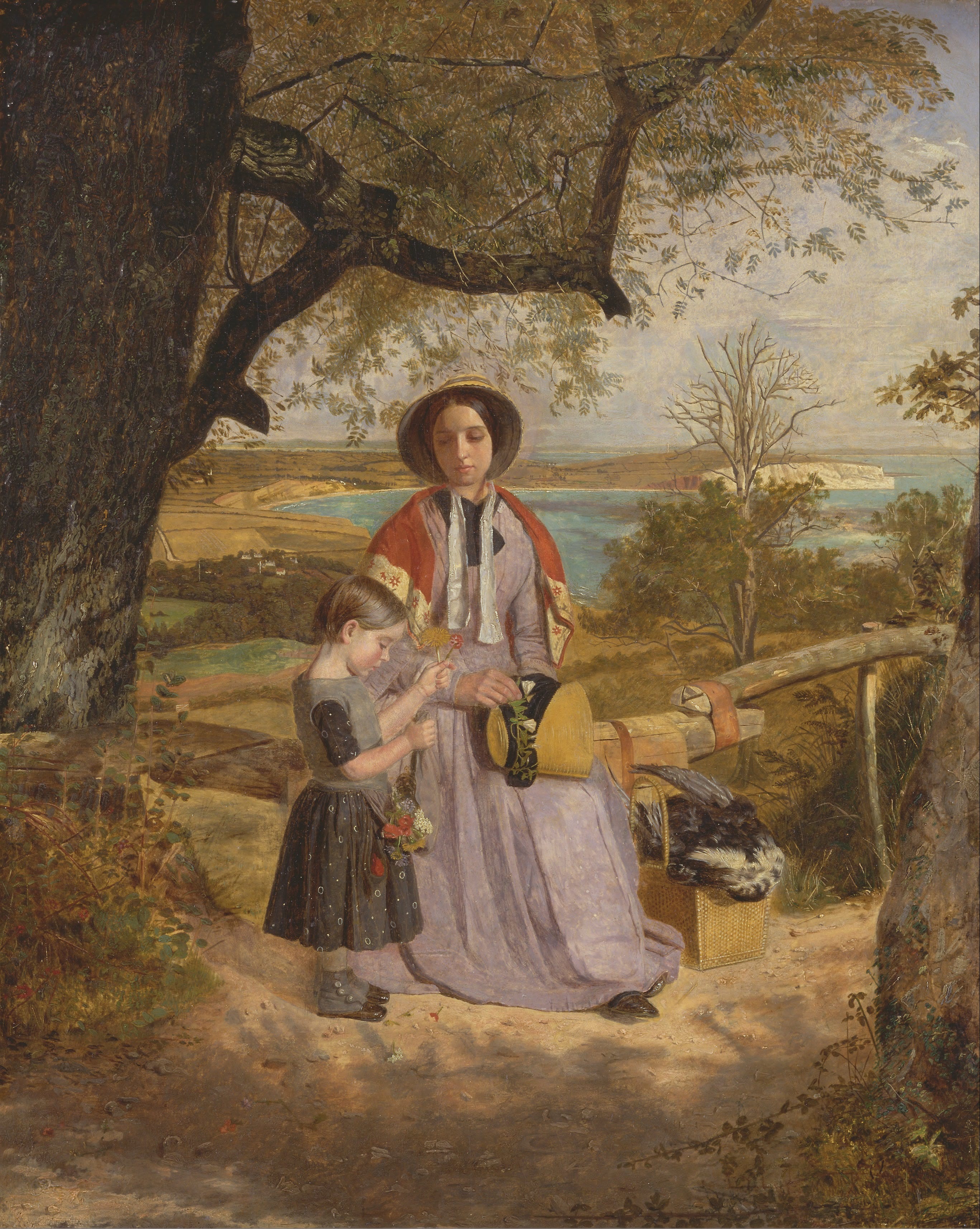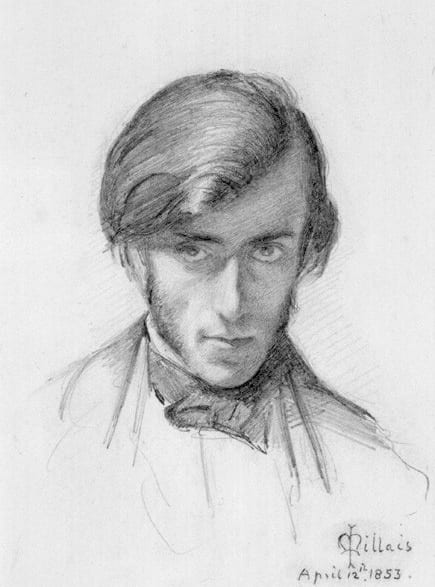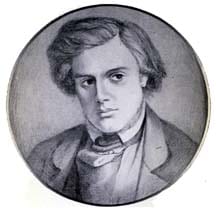 |
| William Michael Rossetti. |
William Michael Rossetti
Often classified as the normal brother of the Rossetti family (compared to his brother), Rossetti worked as the secretary of the PRB, appointed because he was not an artist.
One year younger than his brother Dante, he spent most of his life with him. In his autobiography, he recalls that they shared the same bed, talked, and ate together. Although he may not have been as famous as his brother in the art world, he was the first of the Rossetti children to have a poem published, in October of 1848. Coincidentally, this was also the year the PRB was formed.
Rossetti was in the PRB as a secretary, but he also headed the PRB Journal, otherwise known as The Gem, from 1848 until 1855, according to the proceedings. The members used Gem as a way to get their work out to the public. By undivided agreement, Rossetti was appointed editor.
Rossetti’s life wasn’t totally inclusive of the PRB though. He worked on other journals and newspapers, from being a critic to a photographer to a memorialist. One of his last works as a memorialist was Some Reminisces, published in 1906. He died on February 5, 1919.
 |
| “Mother and Child by a Stile, with Culver Cliff, Isle of Wight, in the Distance” |
James Collinson
Regarded frequently as the least famous painter of the PRB, Collinson met the three founding members at the Royal Academy. Collinson was described as quiet and nervous, earning the nickname ‘the dormouse’. He was proposed to the brotherhood by Dante Rossetti. Collinson converted to the Church of England in order to marry Dante and Michael’s sister Christina Rossetti, but ended the engagement anyway in 1850, when Collinson went back to the Catholic faith and left the Brotherhood because he could not paint alongside men who were not of the same faith as him.
Collinson actually joined the Jesuit College at Stonyhurst in 1853 as a novice, but eventually dropped out and left his priesthood aspirations at the door in 1855. During his time at the college, it was evidenced that he continued to paint.
He continued to paint throughout his life, and eventually restored relations with Michael Rossetti. He died on pneumonia in Camberwell in January of 1881.
 |
| Frederic George Stephens. |
Frederic George Stephens
Like Collinson, Stephens also met the original founders while attending the Royal Academy. He joined the PRB at the end of 1848.
After failing to gain the success that he craved as a painter, Stephens decided to change his profession from painter to art critic. He received a permanent position on the Athenaeum, which he remained on until 1901, and wrote for two other publications as well.
Stephens maintained a successful career as an art critic, and remains most known for his “critical promotion” of Dante Gabriel Rossetti’s career, and also for his relationship with Hunt, who were close friends but eventually drifted apart due to disagreements and squabbles.
Stephens died in March of 1907, in London.
 |
| Thomas Woolner by Dante Gabriel Rossetti. |
Thomas Woolner
Woolner met Rossetti (Dante) and Stephens in 1847. By then, he had trained under sculptor William Behnes for six years, and was attending the Royal Academy.
Woolner became one of the original members of the Brotherhood, and also helped to produce the journal Gem in 1850. For Woolner, most of his sculptures failed to communicate the themes and ideas of the Brotherhood, and so he decided to accompany his roommate Bernhard Smith and Edward Bateman to the gold diggings in Australia.
In Australia, he began by making medallions using tools he made himself. As well as that, he began sculpting bronze reliefs of popular citizens in Melbourne.
Woolner was perhaps one of the Brotherhood’s most short-lived members, not only choosing to leave based on his failure to relate to the principles of the Brotherhood, but because of his desire to continue his occupation in a different country.
Woolner died in 1892 due to internal order after a short illness.
Sources
“ArtMagick.” James Collinson. http://www.artmagick.com/pictures/artist.aspx?artist=james-collinson
“William Michael Rossetti.” The Institute for Advanced Technology in the Humanities. http://www2.iath.virginia.edu/courses/ennc986/class/bios/wmr.html
“Later Victorian Portraits Catalogue.” National Portrait Gallery. www.npg.org.uk/collections/search/personExtended/mp04284/frederic-george-stephens?tab=biography
“Australian Dictionary of Biography.” Biography. http://www.adb.anu.edu.au/biography/woolner-thomas-4887
Mother and Child by a Stile, with Culver Cliff, Isle of Wight, in the Distance – Wikimedia creative commons – PD-1923 – https://sites.udel.edu/britlitwiki/files//2018/06/FileJames_Collinson_-_Mother_and_Child_by_a_Stile_with_Culver_Cliff_Isle_of_Wight_in_the_Distance_-_Google_Art_Project.jpg
Frederic George Stephens. Wikimedia creative commons. https://sites.udel.edu/britlitwiki/files//2018/06/FileFrederic_George_Stephens.jpg
Thomas Woolner.Wikimedia creative commons. PD-1923. https://sites.udel.edu/britlitwiki/files//2018/06/FileWoolner-rossetti.jpg
William Michael Rossetti. Wikimedia creative commons. PD-1923. https://sites.udel.edu/britlitwiki/files//2018/06/FileWilliam_Michael_Rossetti.gif
